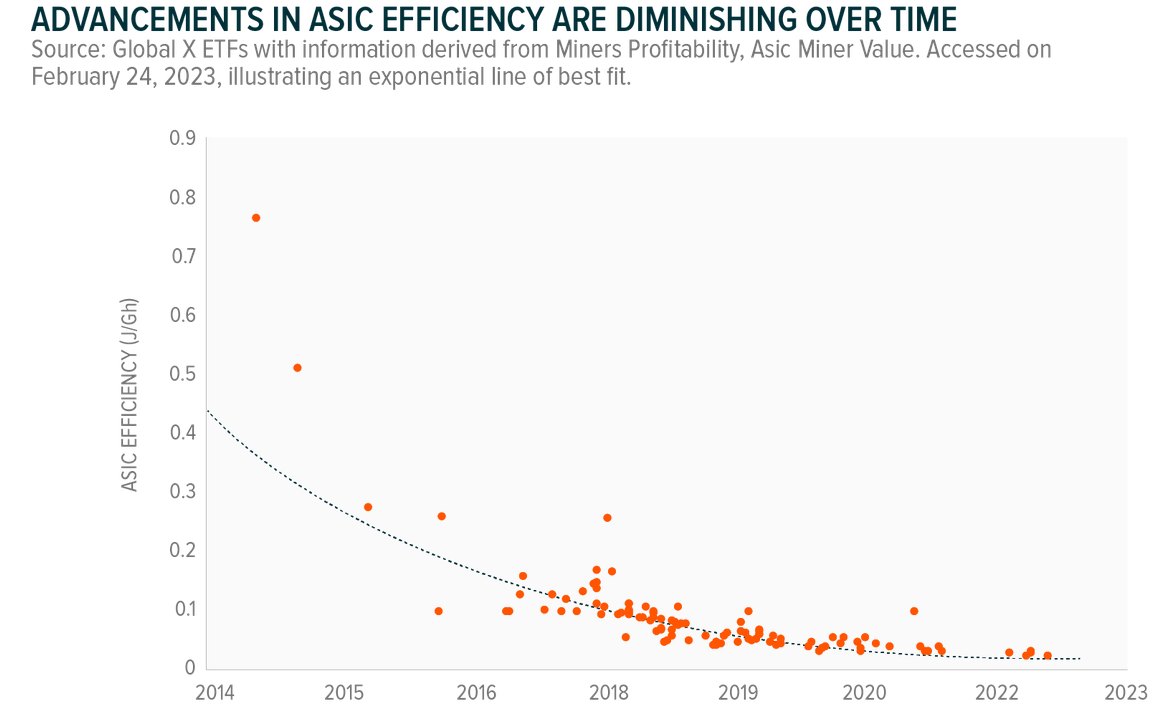While Bitcoin’s journey toward sustainability shows promise, much work is ahead to assess its environmental consequences fully.
There’s a prevalent notion that as Bitcoin (BTC) grows, so does its environmental footprint. But the latest data seem to paint a different picture.
Consider this: since 2019, Bitcoin’s computational power, or hashrate, has surged four times. You’d expect the associated carbon emissions to follow suit. Surprisingly, data suggests they’ve only gone up by a modest 6.9%.
Here’s an explanation to put things into perspective. Think of Bitcoin miners as the electric vehicles of the finance world. They don’t emit; they consume. The electricity they tap into might be green or not, just as an EV might be charged from renewable energy or a coal-fired plant.
To grasp the scale, Bitcoin’s annual energy consumption stands at 119.35 TWh as of Sep. 22, on par with countries like the Netherlands. Sounds massive, but when you compare it to global giants, Bitcoin uses just 2.8% of the energy the entire U.S. does, yet it overshadows the Czech Republic by a staggering 171%.
Before we brand Bitcoin an eco-villain or a green pioneer, let’s dive deeper and uncover the facts.
Is Bitcoin mining moving toward sustainability?
Coal once dominated the energy source conversation for Bitcoin. According to Batcoinz data, hydro is at the forefront, supplying 23% of Bitcoin’s mining power. Daniel Batten, an environmental, social, and governance (ESG) analyst behind the research, suggests that while 15.8% of mainstream on-grid power stems from hydro, more than half of sustainable off-grid mining taps this renewable source.
He states that wind energy isn’t far behind, making up 14% of Bitcoin’s power, bolstered by behemoths like Marathon and the wind-rich ERCOT grid, home to a quarter of Bitcoin’s mining operations.
Bitcoin pulls only 22.92% of its energy from coal, 21.14% from gas, and 2.28% from other sources, suggesting more than 50% of its energy consumption comes from sustainable energy sources, Batten suggests.
As of March 30, 2023, this energy distribution remained dynamic, subject to hashrate and mining shifts. And the future looks promising, with sustainable energy in the Bitcoin network growing by 6.2% yearly, heading towards a decreased dependency on coal and gas.
The Bitcoin Mining Council (BMC), representing nearly half of the global mining industry, indeed reports a significant increase in the use of renewables, with 58.9% of mining electricity sourced from renewables in Q4 2022, a substantial rise from 36.8% in early 2021.
However, the rate at which crypto miners adopt renewable energy sources remains a subject of debate.
The BMC’s claim of almost 60% renewable energy usage clashes with the numbers provided by the Cambridge Center for Alternative Finance, which indicates a lower adoption rate. George Kamiya, an energy analyst at the International Energy Agency, told Time that while the BMC may possess more extensive data, their figures stem from self-reported surveys lacking in-depth methodological details.
This discrepancy in reported figures underscores the need for transparency and rigorous analysis when evaluating the extent of crypto mining’s shift toward renewable energy sources.
Bitcoin’s journey beyond ASICs
Once, the Bitcoin gold rush was all about ASICs (Application-Specific Integrated Circuits). Pioneers chased after the latest, fastest, most energy-efficient hardware.
Flash forward from 2014, and today’s ASICs outpace their predecessors by a staggering 36 times in energy efficiency per gigahash. But every gold rush hits a vein, and we’re nearing that with ASICs. Their efficiency leaps are becoming baby steps, as charts reflect.

Some experts believe that Bitcoin’s next frontier isn’t just about faster hardware; it’s about sustainability. Green energy like solar and wind power have become cheaper than fossil fuels, as shown in recent energy cost charts.

Sustainable BTC mining
Some mining leaders, like Marathon Digital, are moving away from coal-heavy areas to places like King Mountain, Texas, where the wind is abundant. Around the world, nations and startups are collaborating on eco-friendly approaches that have the potential to reshape the industry.
Consider Bhutan, a Himalayan kingdom where Gross National Happiness is a key economic indicator. Bhutan is entering the green crypto mining arena in partnership with Nasdaq-listed Bitdeer Technologies Group. Together, they aim to establish a substantial $500 million fund that will harness Bhutan’s abundant hydroelectric resources for sustainable cryptocurrency mining.
Bhutan is not alone in this endeavor. In South America, Sazmining is establishing a presence, with its focus on Paraguay’s Itaipu Dam. This massive dam, spanning nearly five miles, offers the allure of cost-effective hydropower.
Yet, while some countries and companies aim to adopt eco-friendly approaches for cryptocurrency mining, there are concerns that impatient miners might opt for less clean energy sources. In Kentucky, old coal mines were converted into crypto mining hubs, contributing to significant carbon emissions. Kentucky, with its reliance on coal, holds one of the highest carbon intensities for crypto mining in the United States. According to Earthjustice, the cryptocurrency industry in the U.S. was responsible for millions of tons of carbon dioxide emissions in a short period.
However, not all plans to support crypto mining have gained approval in Kentucky. In an Aug. 28 order, the state’s Public Service Commission rejected a proposed contract between Ebon International and the Kentucky Power Company. This contract would have provided Ebon with a discounted rate for electricity at its crypto mining facility. The mining operation, initially set at 100 megawatts, with plans to increase it to 250 megawatts by 2024, was met with environmental concerns. Groups like Earthjustice and Greenpeace hailed the commission’s decision, citing potential negative impacts on taxpayers and the environment.
The road ahead
Bitcoin, once criticized for its environmental impact, is undergoing a significant transformation. It could change its image from a carbon-heavy culprit to an advocate for eco-friendliness, with green energy leading the way.
However, there are challenges on this green path. Renewable energy sources like solar and wind can be unpredictable due to their intermittent nature. Nevertheless, these hurdles present opportunities. Innovations in energy storage, smart grids, and hybrid systems could become crucial in Bitcoin’s journey towards sustainability.




